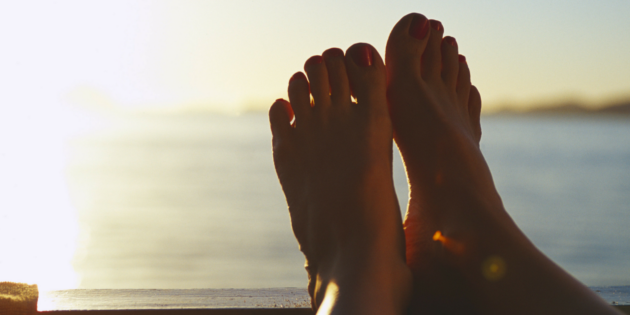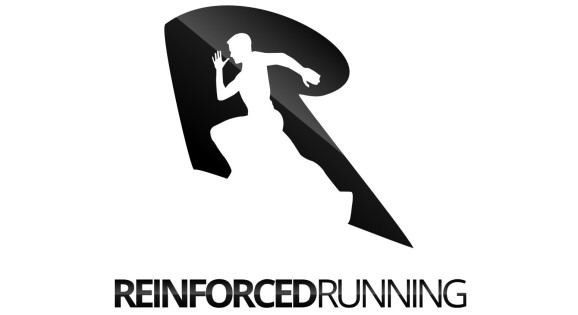Simple steps to keep your feet happy.
Your feet are the most important body part. They are your foundation and key to long-term health. Many runner injuries stem from poor foot strength and mobility. Everything begins at your foot level and works its way up the chain.
So, take time care for your feet! I’m not sure talking about a pedicure (but I am sure you could use one). You need to spend time strengthening and mobilizing those dogs.
“I have this pain in both feet when I wake up in the morning,” Kelly explained when she found out I am a running coach.
“The first step I take is excruciating. I hobble around like I’m 90 years old!”
I nodded as she explained this familiar scenario.
“Do you think I need new shoes.” Kelly finally asked:
Keeping a fresh pair of shoes on your feet will help ease some pain. But shoes are often a crutch. Weak feet are to blame for running injuries, not your shoes.
But, getting new shoes is easier than discipline work.
You can have strong feet with diligence, attention, and a plan. You don’t need fancy equipment or that much time. You need the willingness to take action.
Follow these three steps if you are sick of limping out of bed in the morning and missing runs from injury:
Arch Exercises for Foot Strength
Plantar Fasciitis (PF) is like a plague for a runner. The best advice I have ever heard about how to deal with PF is:
“Don’t get it in the first place.”
This is great advice, but not very practical.
Rest alone will not solve your PF problem. It will not just “go away” with time. You need to be proactive.
What is the Plantar Fascia?
The Plantar Fascia is connective tissues on the bottom of the foot. Connective tissue does not have motor neurons. Meaning you can not contract your Plantar Fascia the way you can with muscle.
You can strengthen connective tissue over time with exercise to the surrounding muscle. The process takes much longer than building muscle strength. Which makes consistency key in your workouts.
There is a muscle called the Flexor Hallucis Brevis. The FHB handles flexing your big toe. Strengthening the FHB will improve connective tissue, including the Plantar Fascia.
Use the following exercises and reps and sets 2-3 days a week to target the Flexor Hallucis Brevis
Do 3 sets of 45-60 seconds
Do 3 x 5-8 reps
Do Foot Mobility and Stay Healthy
Your body is connected.
It’s true! And it may seem obvious, but when it comes to strength and injury, we isolate body parts.
When your back hurts, you stretch your back.
When your calves hurt, you foam roll your calves
When our neck hurts….you get the idea
But, the root of your injury is not always local to the pain.
Here is why:
There is a layer of connective tissue that surrounds our muscle called Fascia.
Fascia is like a sausage casing for your muscles. Exercise creates muscle damage. As your muscle heals from the “micro tears” caused by running your fascia can become tangled and “tight.” The tightness will constrict our muscle movement and blood flow.
The restricted movement will cause other body parts to compensation. Compensation is adding more work to an already fatigued are which leads to overuse and eventually injury.
Feeling “tight” or “stiff” can stem from the tangled fascia. Breaking up the fascia allows your muscle it to heal without tightness.
Soft tissue mobilization and static stretching will help you feel better on your run.
Stretch or mobilize for a minimum two minutes.
Yep, Two full minutes every day!
If you are running with pain or discomfort, do mobility 2-3 times a day. It seems like a lot, but it’s only 10-15 minutes of your day, total. Which is a worthwhile price for pain-free running!
Just do the f’n work!
Do the any of the following exercises to feel the results.
Toe Mobilization
How to Reduce Collapse and Compensation with Ankle Mobility
Have you heard the term “over-pronation”?
Pronation/overpronation seems like a negative term. Runners feel doomed to a life of clunky running shoes and shin splints.
Yet, everyone pronates. Pronation is your body’s way of absorbing shock and returning energy to your body from the ground.
But, there is a point where the collapse and compensation will lead to damage to the arches, shins, and hips.
Our first instinct is to add support to our shoes or use the latest technology to limit the amount of collapse.
Less collapse = less injury
But, as early stated, you do not want your footwear to become a crutch that you live by for you run.
Not to generalize, but runners have super tight calves.
In particular the lateral gastrocnemius, or the outside of your calf close to your knee.
Reach down right now, yes as you are reading.
Dig your thumb into the outside of your calf. If it hurts like the dickens, you are a runner!.
Tight calves and ankles will create a compensation to your stride. \
If you do not have the requisite mobility to flex your toes up you may have some ankle l mobility. Your ankle will collapse onto your arch. The collapse will cause that “overpronated” look and increase the risk for injury.
Stretch your calves for two minutes every day if you have foot issues and 2-3 time s a week to be preventative.
How to create habits around strength and mobility
If you follow these steps, you will help yourself become a pain-free runner. But, you need to do the work. Ultimately this article is about creating habits around your mobility. Stretching and mobility are hard because you are busy. You have subconscious habits that are hard to break. You can find time by having a “trigger action.”
Trigger actions are things that are already in your daily routine. Take this action and coupling it with stretching. I suggested doing your mobility work before a current habit.
For example:
Before you have our morning coffee take 2-4 minutes to roll your feet.
or
Before you go to lunch, stretch your calves
After a week or two, your stretching will become something that you “just do”.
Your feet are your foundation. Take for the care of those pups!


